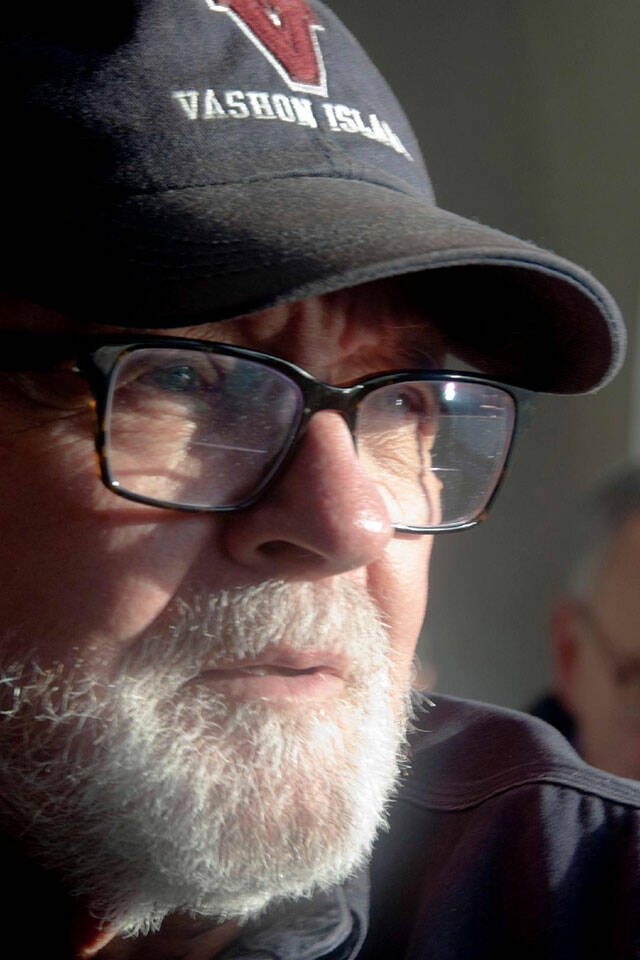Vashon Agriculture was celebrated on May 22, in what will hopefully be an annual event sponsored by Mukai Farm and Garden, the Vashon-Maury Island Land Trust, the Heritage Museum, and the Vashon Island Growers Association (VIGA).
In celebrating Vashon agriculture, it is interesting to consider the special stretch of Bank Road from the four-way stop to 107th Ave SW. Within a quarter of a mile, you have four organizations and locations that focus on the growers, the land, the history, and the people that helped define Vashon.
VIGA’s Vashon Saturday Market, supporting local Vashon agriculture, while technically not on Bank Road, is just around the corner — close enough to qualify.
The Land Trust nurtures and preserves natural areas and agricultural land on the island. The Heritage Museum preserves and tells the diverse stories of our island. And, Mukai Farm and Garden preserves and tells the story of a distinctive Japanese American heritage site with its house, garden and barreling plant.
These four organizations, each in their own way, help to tell the story of Vashon agriculture through the growers, the land, the history, and the sites that are key to understanding this part of Island history.
Agriculture on Vashon has always been diverse, multi-faceted, and an entry point for many different population groups who came to the island at different times, but all with the same purpose to make this island their home.
I want to suggest we expand our concept of agriculture from growing food and raising animals on the land — from the Latin root words “ager” (field) and “cultura” (civilization or growing) — to the broadest possible meaning of “using natural resources to maintain life.”
If we shift our understanding of the concept this way, then we can see Vashon agriculture in a very different light. We can see the concept of agriculture is not confined only to farming but includes all the ways we work with the natural resources of the island, the land, and the waters around it to grow what sustains us. Consider that VIGA named themselves the Growers Association, not the Farmers Association.
VIGA represents many of the farms on Vashon that grew out of the “farm-to-table” and Carlo Perini’s “slow food” movement of the 1980s and 1990s. VIGA’s Saturday Market, along with the many farm stands developed by its members, provide easy access to the bounty produced by island farms.
But also take some time to drive around the island, drive the back roads and the seldom traveled lanes and you will discover how many farms there are on the island. Not only VIGA farms — but all kinds of small farms that all anchor their owners’ connection to the land.
The sx̌wəbabš Coast Salish People’s connection to the land began over 4,000 years ago when they started growing on the island. The sx̌wəbabš combined what they called “clam gardens” (take a moment and consider the wonderful connotations of that name) and other forms of aquaculture with “firestick” burning regimes to cultivate and farm the uplands of the islands by clearing land to maintain swales for their horses, allow root plants to flourish for harvesting, and encourage the growth of berries and bracken ferns.
All of these provided much needed carbohydrates in a diet rich in protein from seafood and land mammals.
This first sx̌wəbabš agriculture on the island was not recognized by early voyagers or early settlers who came with preconceived notions of what defined agriculture. And that is why I ask you to consider agriculture in its broadest sense. We do not want to remain trapped in those colonial constructs that could not see the varied and diverse sx̌wəbabš use of the land as agriculture.
Just as today, we do not want to remain trapped in a narrow definition of agriculture that sees it only as farming the land, and miss out on the many delightful and creative ways in which islanders work with the natural resources of the island to sustain us.
This expanded definition of agriculture began on Vashon more than 4,000 years ago with the sx̌wəbabš and as agriculture changed it helped define the island. Today, agriculture on Vashon still plays an important mythological role in the island’s process of self-identification as a rural enclave in the vast urban sea of the ever-expanding cities of the region — the Pugetopolist that surrounds us.
Bruce Haulman is an island historian. His photograph, with this commentary, is by Wade Yip.



